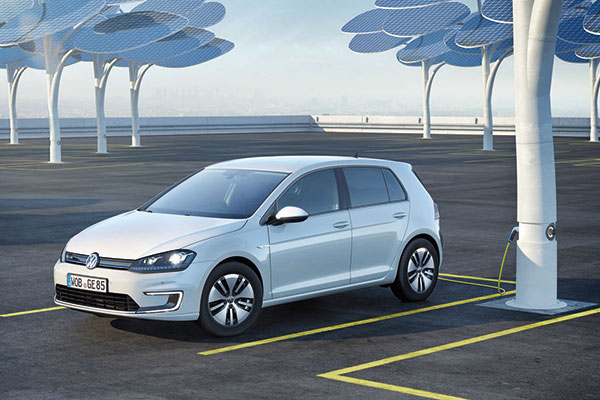 |
|
The Volkswagen e-Golf allows a maximum range of 190 kilometers on a single charge. [Photo provided to China Daily] |
The new GTE hybrid models are now taking the TSI concept to the next level, by adding an electric motor to the TSI engine and DSG gearbox, delivering emissions-free urban driving while still providing owners with the flexibility of a big driving range.
Volkswagen solutions
Some would argue that, in the short term, the automaker faces a critical hurdle in incorporating its TSI and DSG with an electric motor, given the differences between NEVs and conventional gasoline cars. The question is how to kick-start production of plug-in hybrids, or PHEVs, (and ultimately battery electric vehicles, or BEVs) without dramatically increasing costs and therefore consumer prices.
Volkswagen already has a solution in place. At Auto Guangzhou, the brand revealed that all PHEVs and BEVs are being produced using its innovative modular toolkits - particularly MQB and MLB - whereby cars with totally different drivetrains can be made on the same production line.
This means Volkswagen has the means to rapidly introduce innovative new models and technologies to the market. Of these platforms, the MQB was first introduced to China at the Foshan Plant, where the seventh-generation Golf is being produced.
It also means that Volkswagen does not have to develop an NEV model separately, but is in a position to introduce PHEV and BEV variants across product families and model lines; the Golf GTE and Passat GTE already exist, with plans for many more to come. The platforms are key to enabling pricing to come down, which is important for NEVs to become more mainstream - another way in which Volkswagen is helping to drive China's e-mobility revolution.
Localization will play a major part in Volkswagen's "NEV Offensive", with the group announcing plans to have 15 locally produced NEVs, including both PHEVs and BEVs, on the market in the next three to five years, consistent with its "Made in China" and "Made for China" strategies. Key components, including the battery, e-motor and power electronics, will all be locally produced.
Looking to the future, Volkswagen Group is currently developing the MEB, an electric toolkit. This will be a new multi-brand toolkit especially designed for BEVs. The standardized system will enable a greatly extended all-electric driving range of up to 500 kilometers. The brand also promises the toolkit will allow for the creation of particularly emotional vehicle designs.
The sporty new GTE models and pure-play all electrics showcased at Auto Guangzhou clearly point in the direction China's largest automaker is moving. It seems that Chinese car buyers can stop waiting for the cars of the electric future - for Volkswagen, the future is now.
